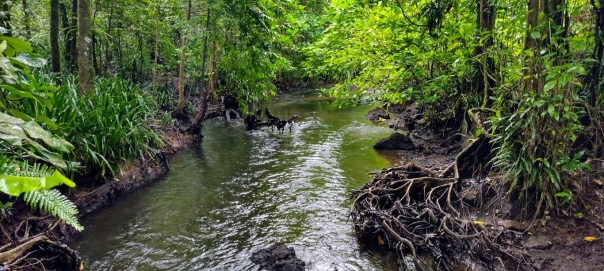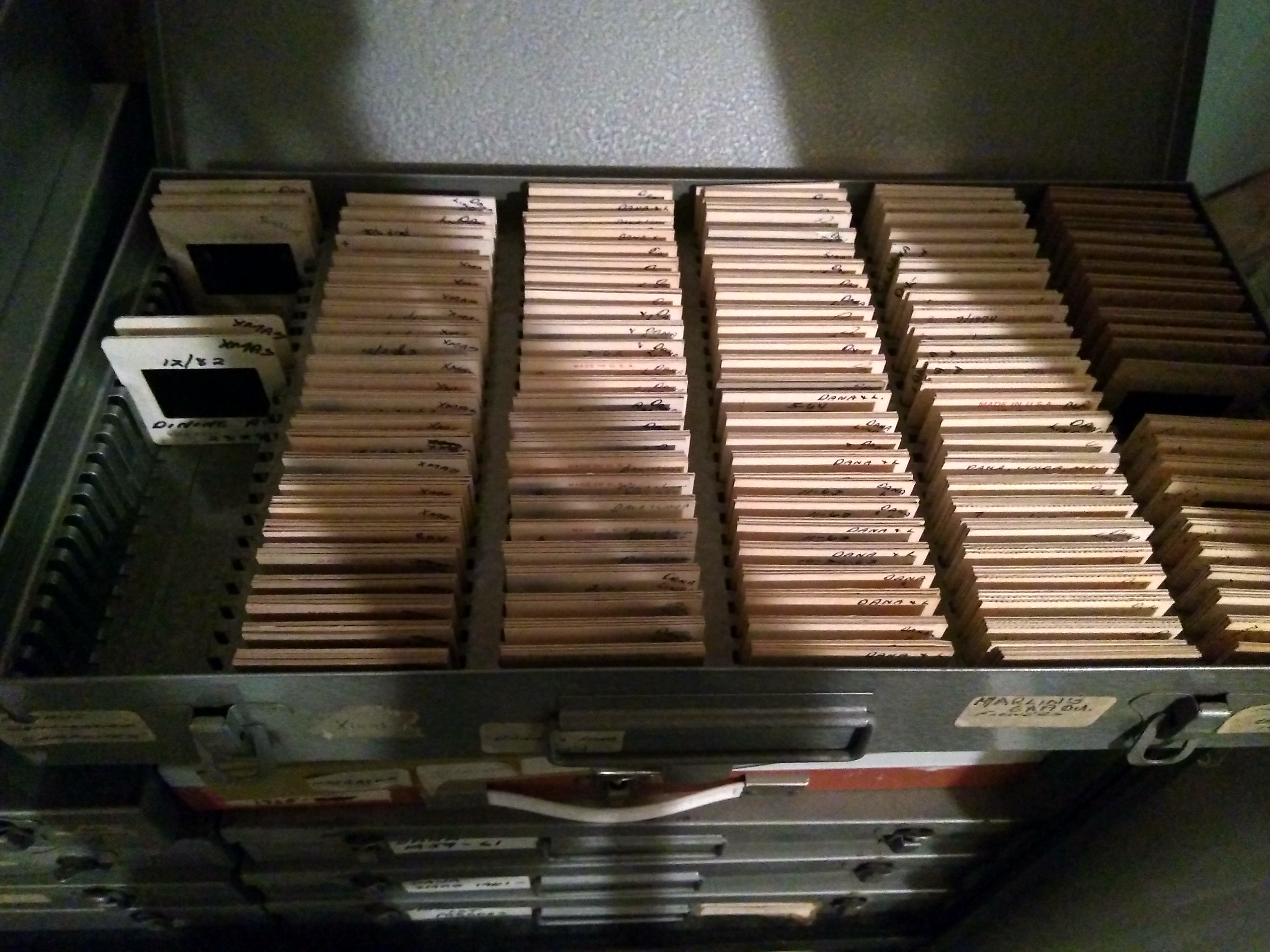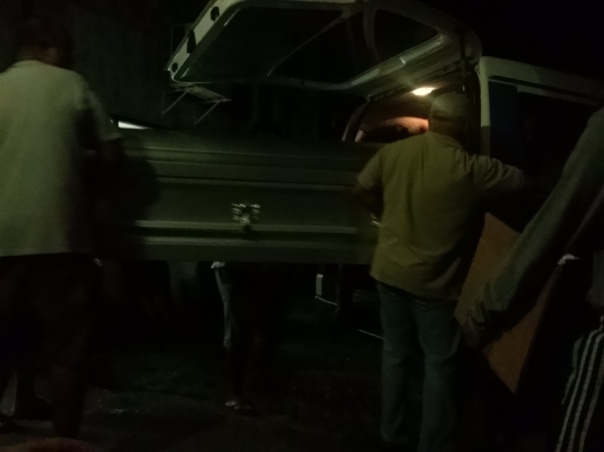
The tree was still there. I had scrambled up behind Walung elementary school following tracks that led only to a bamboo grove. From the bamboo I made my way up to the ridgeback. If there is a passageway in the forests of Kosrae, then they are to be found atop the ridge. The shadowy figure of a dark concrete water catchment tank could be made out.
Just past the tank, a cluster of dieffenbachia sprouted from the forest floor. I was not alone – the dieffenbachia assured me someone had been here before. I had been here before. As I was now.
Beyond the dieffenbachia I stumbled across the coral paver walkway. Literally. The walkway was obscured under leaf litter and ground growth, the edge still able to catch my foot. Filtered sunlight dappled the sea of thelypteris ferns around me. A Micronesian dove cooed in the distance.
I followed the trace of the coral pavers up the ridgeline, as I had some 30 years earlier. Where the pavers ended, however, the tree was not on my left as my memory had expected. I looked around, but could not see the tree. Turning right, I headed further up the slope.
Now any vestige of a trail was gone. A hole in the canopy had permitted a tangle of understory vegetation to take hold of the slope. A mix of vines, shrubs, and macaranga tree seedlings. Without a machete I had to think like a wild pig and scramble under the underbrush. There are almost always tunnels in a tangle.
When I came up through a hole in the greenery, there was the tree. Larger than I remembered. When I first saw the tree I was baffled by the pine tree-like trunk, the thick, narrow, leaves with no midrib. The hardened pine resin where cuts had once occurred.
I would remain puzzled by the tree after returning to Pohnpei. On a visit to the Pwunso botanic garden, back around by the tennis courts, I would be stunned to discover that there were three of the same tree as I had encountered in Walung. Only later would I learn that the tree is a kauri pine, possibly Agathis lanceolata. Not to be confused with the more common Cook Island pine, Araucaria columnaris, that is commonly seen on Pohnpei.
On a second visit almost twenty years ago I would find my way back up to the tree, now knowing what the tree is. Three years ago on a visit to Walung I would attempt to find the trail, but the trail was gone and I wasn’t dressed for punching through the dense brush. This time I brought a change of clothes appropriate for pushing through underbrush.
Although I had gotten to the kauri in the past, I had not figured out which way to go to get to the lone Cook Island pine that also stands above Walung on the site of the long ago closed Mwot pastoral training school. On prior visits the kauri was surrounded by forest and I could not see which way to go to reach the Cook Island pine. This time the kauri stood in an open patch of the forest canopy. I could see the Cook Island pine reaching into the sky off to my right, but there appeared to be no obvious way to reach the pine.
To the right was a denser tangle that combined hibiscus tileaceus, vines, and other plants, along with the remnant cement walls of the old school. Underfoot was downed and partially rotting logs. As I made my way to the right I found that some sort of ditch or gully now ran through what must have been the middle of campus. On the other side of the ditch the ground was soft, an upland mud patch, which was filled with a head high tangle of vines held up by smothered and stunted premna obtusifolia.
The going was slow. The sun, the greenery, and the wet mud underneath contributed to a near hundred percent humidity and no breeze. I was carrying no water and had been sweating for nearly an hour. I was reminded that I no longer have the body that could whack through brush high above Takumi’s place for a few hours without feeling the heat.
As I slid back down into the ditch a second time I saw the male cones of the araucaria pine on the ground around me. I was so excited. I looked up and sure enough, I was almost directly under the pine. I scrambled up the other side of the ditch and pulled myself up under the pine, surrounded by decades of male cones. This was my first visit, and not unlikely, given my age, my last visit to the pine. I was happy to be there, and sad that this would a one time visit.
I made my way back to the kauri pine and paused there for a while. I had wanted to return to this tree, and had done so. The kauri reminded me of all that Kosrae had brought me in the years since I first laid eyes on the tree. The tree had been a true giving tree. A loving partner. Wonderful children. A good life. The man who had first brought me to Walung was now gone, but he had welcomed me into his home, treated me as family, and made me realize that were I to leave, memories of Kosrae would always haunt me.
This summer has been a series of places and events that bring back memories both from Kosrae and from other times and places in my life. A series of touchstone events and places. A return trip to Leluh with students in my class. A paddle on a river in Yela that brought back memories of a canoe trip long forgotten. Clearing the path to the beach and seeing a coral paver that reminded me of the pavers I once placed there when I was young and single. A journey up to Takumi’s place, long ago lost to the jungle, to express thanks to no one in particular, just a chance to bathe in the memories that place holds. To give thanks for the blessings and gifts that place brought into my life. A summer of having faith that everything will work out, a summer of thankfulness and of memories.














